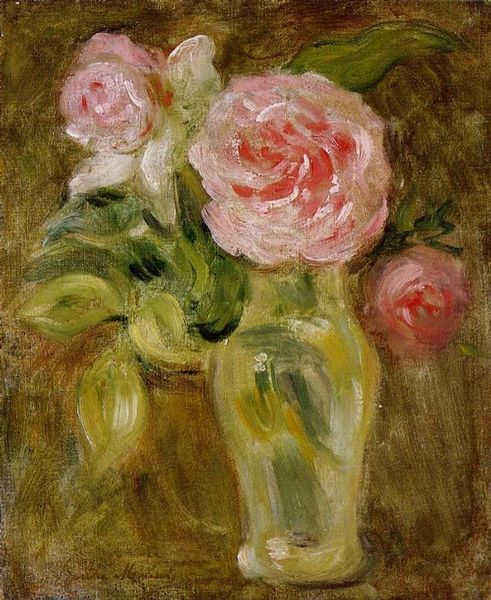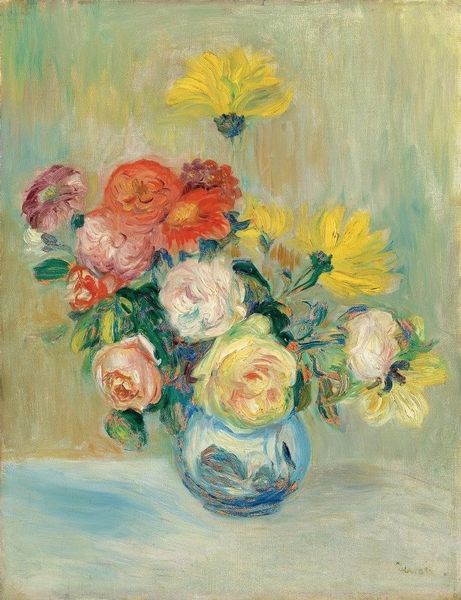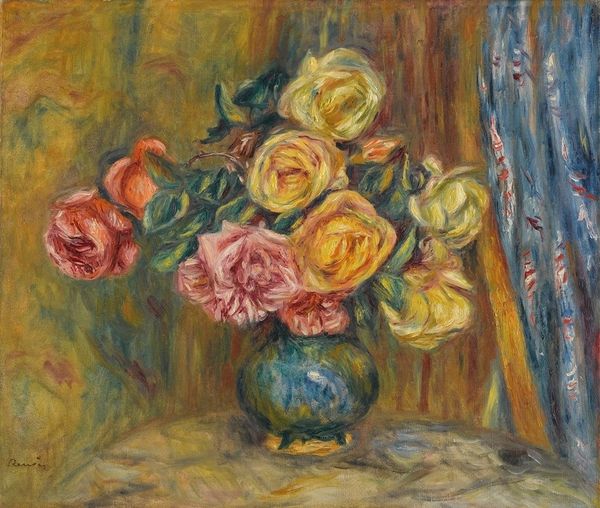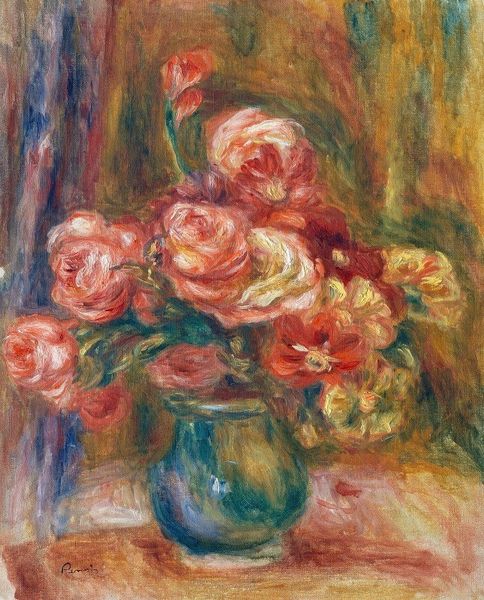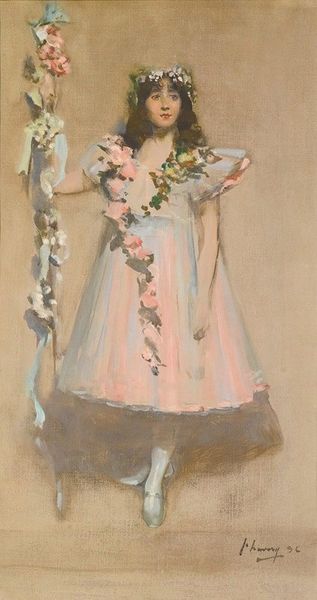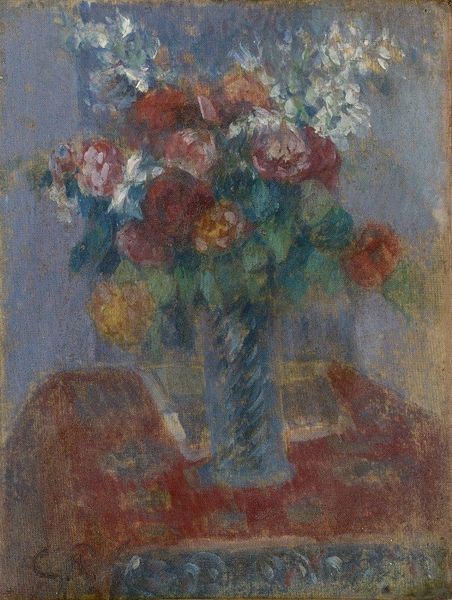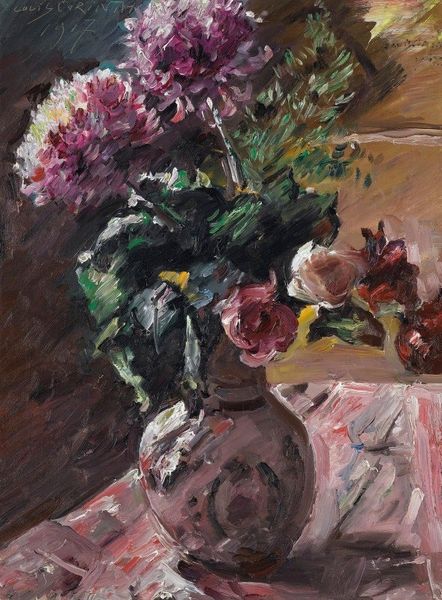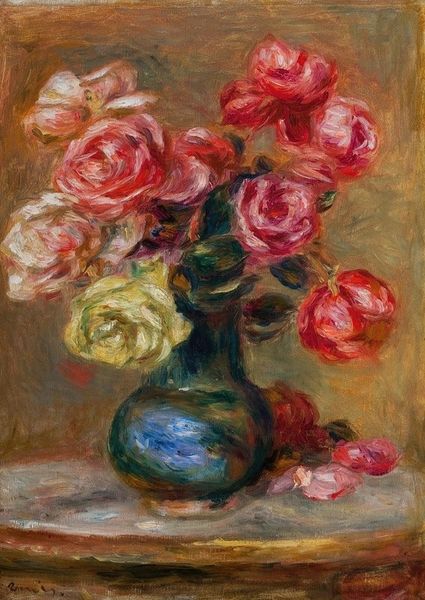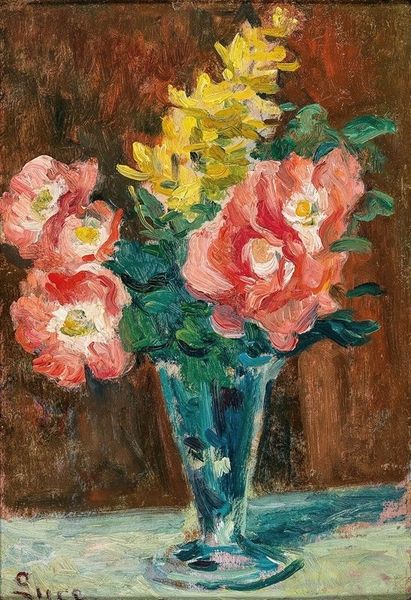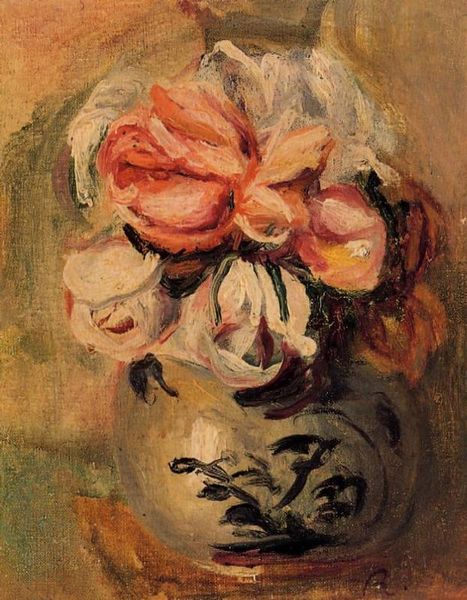
#
abstract expressionism
#
abstract painting
#
impressionist landscape
#
possibly oil pastel
#
fluid art
#
acrylic on canvas
#
underpainting
#
paint stroke
#
painting painterly
#
watercolor
Copyright: Public Domain: Artvee
Berthe Morisot’s 'Anémones Roses', likely painted in the late 19th century, presents a still life dominated by soft, diffused light and gentle pastel hues. The arrangement, featuring a vase of anemones alongside what appears to be fabric, is rendered with fluid brushstrokes that emphasize the ephemeral quality of the scene. This visual approach evokes a feeling of quiet contemplation. Morisot's use of color and form subtly challenges traditional compositional structures. The indeterminate background and loose handling of paint de-emphasize fixed spatial relationships, disrupting the traditional still life conventions and blurring the boundaries between objects. The artist uses a semiotic system of signs whereby the anemones serve as cultural codes that speak to notions of femininity and beauty. However, Morisot destabilizes these meanings through her progressive painting technique. The painting’s delicate balance between representation and abstraction underscores Morisot’s engagement with broader artistic and philosophical concerns of her time. Her emphasis on the materiality of paint and the interplay of light invites us to reconsider how we perceive reality. This encourages ongoing interpretation and re-interpretation of art.
Comments
No comments
Be the first to comment and join the conversation on the ultimate creative platform.


